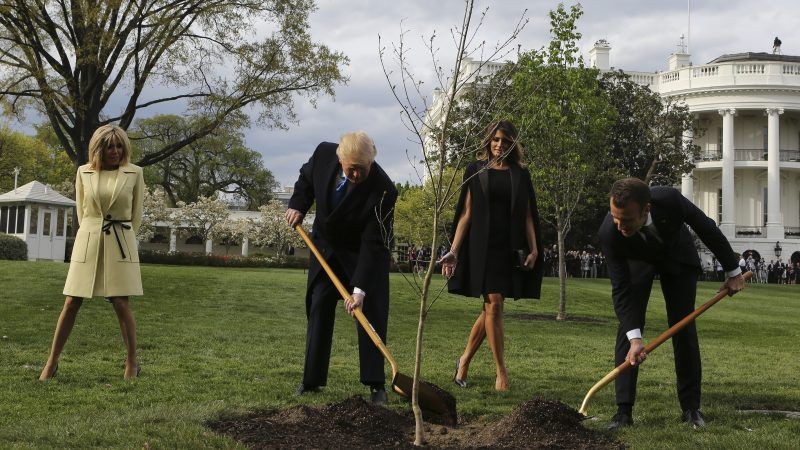Trump's Trillion Trees Promise at the World Economic Forum
Meeting that goal would essentially restore U.S. forest area back to where it stood in 1630.

President Donald Trump in his speech at the World Economic Forum (WEF) in Davos, Switzerland, announced, "Today, I'm pleased to announce the United States will join the one trillion trees initiative being launched here at the World Economic Forum." Why join this initiative? "We're committed to conserving the majesty of God's creation and the natural beauty of our world," added Trump.
Entirely unmentioned by the president is that the primary motivation for the initiative that aims to plant 1 trillion trees is to slow down man-made climate change by removing gigatons of carbon dioxide from the atmosphere. "Restoring, conserving and planting a Trillion Trees by 2030 can deliver massive and urgently needed progress against climate, biodiversity and sustainable development goals," states the WEF press release on the initiative.
The inspiration for the WEF's Trillion Tree Initiative was a presentation at the organization's meeting last year by Swiss ecologist Thomas Crowther who asserted that there is enough land to accommodate 1.2 trillion more trees. Currently, our planet is home to about 3 trillion trees. In July of last year, Crowther and his team calculated in Science that planting a little more than 1 trillion additional trees would significantly cool the earth by sequestering in growing trees about 25 percent of the carbon dioxide currently in the atmosphere. Implausibly assuming that human carbon dioxide emissions stopped now, that goal would notionally lower atmospheric carbon dioxide concentrations back to about where they stood a century or so ago.
Crowther and his colleagues calculated that there are about 900 million hectares (3.5 million square miles—an area about the size of the entire U.S.) of land that is appropriate and could be available for planting a trillion trees around the world. Most of the land is in big countries like the United States, China, Russia, Canada, and Brazil. For example, in the U.S., the researchers estimate that 103 million hectares (about 400,000 square miles—an area about 1.5 times the size of Texas) could be planted without impinging significantly on farming, urban areas, and so forth.
The U.S. Forest Service estimates that, in 1630, forests occupied just over 400 million hectares (1.6 million square miles) of land area that eventually became the United States. That's about 46 percent of the land area. In the second half of the 19th century, forest clearing in the U.S. averaged about 13 square miles per day every day for 50 years. By comparison, the recent rate of forest clearing in Brazil is about 10 square miles per day. By 1910, U.S. forest area had fallen to about 305 million hectares (1.17 million square miles). As of 2012, it had expanded to 310 million hectares (1.20 million square miles) while U.S. population has more than tripled.
The upshot is that meeting the Trillion Tree goal would essentially restore U.S. forest area back to about where it stood in 1630.
Is planting a trillion trees by 2050 a plausible goal? The world may have reached global peak agricultural land in 2000, suggesting the more land is being freed up that could be restored to nature. In fact, a 2018 study in Nature reported the happy news that global tree canopy cover increased by 2.24 million square kilometers (865,000 square miles) between 1982 and 2016. That's a rate of about 25,000 square miles per year. To plant a trillion trees occupying 3.5 million square miles by 2030—as outlined in the WEF proposal—would require a 14 times boost (350,000 square miles per year) in the rate of global forest expansion. Meeting that goal by 2050 would mean quadrupling the rate of forest cover expansion.
The Trump administration has not yet provided any proposals aimed at fulfilling the president's WEF commitment to participate in the initiative.



Show Comments (98)